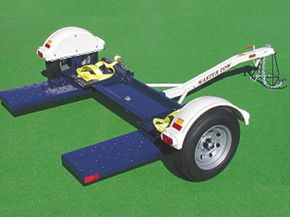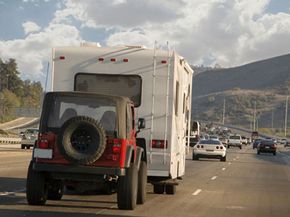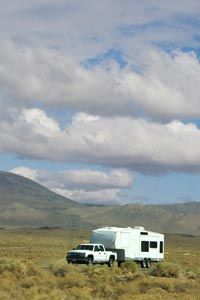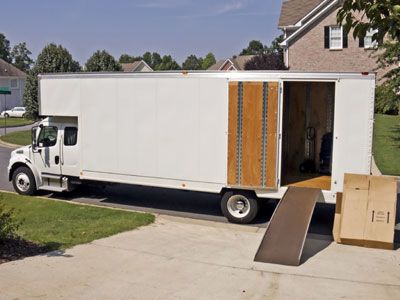There are a lot of things to consider when you're towing your car: Is the coach vehicle (the one doing the towing) at least 750 pounds (about 340 kg) heavier than the car in tow? Are the brakes of the lead vehicle capable of bringing both vehicles to a complete stop without terrifying the passengers involved? If not, then an aftermarket braking system would be a wise investment. These systems use the electrical impulse generated by the lead car to apply the car in tow's brakes equally. Breakaway brakes perform a similar function, applying the car in tow's brakes in case it becomes unattached to the lead car.
These are all important considerations to take into account before you hop into your lead vehicle and tow your car off into the sunset. It's also important to practice with towing a car before taking your caravan out on the road. Driving with a car in tow is a completely different experience from regular driving, although many people think they'll come by it naturally. This isn't always the case; instead it's a good idea to practice maneuvers like turning and backing up in wide, open spaces. Parking lots work well for practicing these maneuvers.
Advertisement
There's also the consideration of what method of towing best suits you. In this article, we'll explore three methods of towing your car - flatbed towing, two-wheel towing and flat towing. Each of these methods has its benefits and drawbacks. Some are safer, but more expensive than others. Some require you disconnect parts of the car before you take it out on the road. Others require special attachments.
Is your head swimming yet? Relax. We're here to help you choose what towing method suits you best. Read the next page to learn about the first method, flatbed towing.





